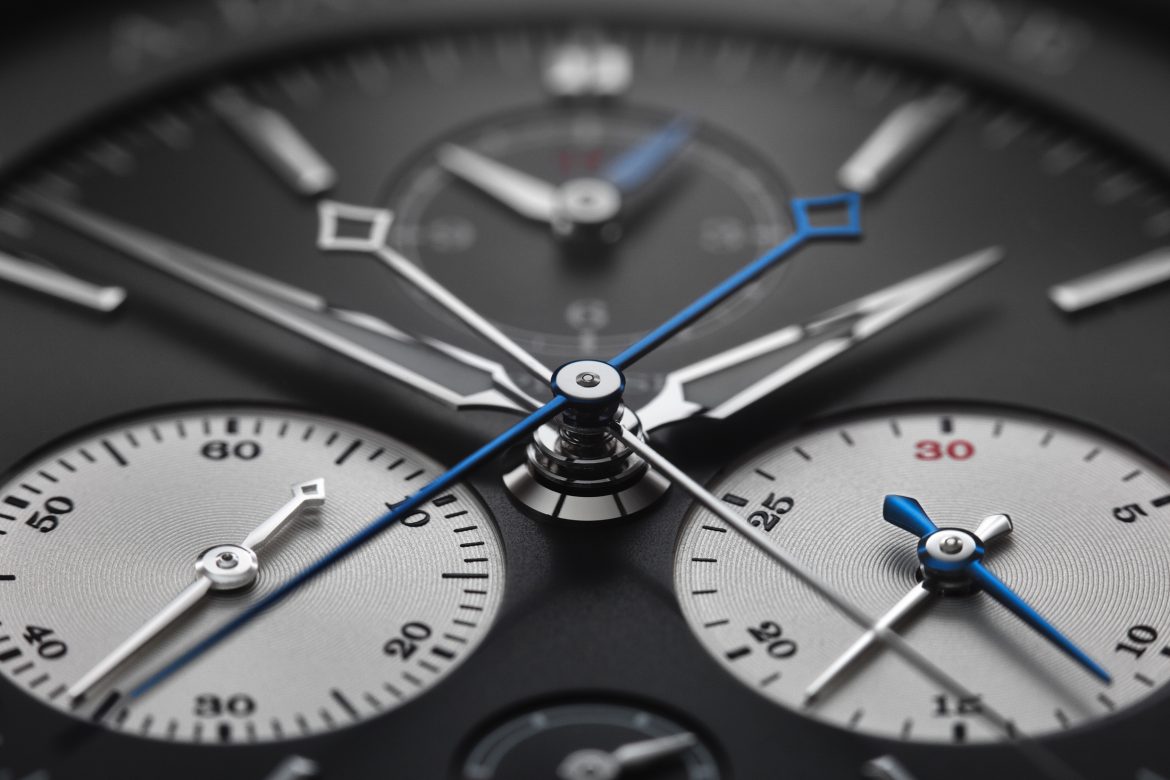A. Lange & Söhne invented the Double Split Chronograph in 2004. Fourteen years on in 2018, the German watchmaker has broken their house record and distanced their lead in innovation again with the one-of-its-kind Triple Split Chronograph.
As innovation goes, one of the most ground breaking, game changing and landmark inventions in the field of automotive engineering, is the introduction of the dual clutch transmission (DCT).
First introduced in the late 1980s, the dual-clutch transmission (DCT) (sometimes referred to as a twin-clutch transmission or double-clutch transmission) is a type of automated automotive transmission. It uses two separate clutches, for odd and even gear sets. It can fundamentally be described as two separate manual transmissions with their respective clutches contained within one housing, and working as one unit.
This technology provides smooth, seamless driving with fast and precise gear changing, and minimal loss in revolutions or torque. Refined and improved over the years, Porsche, Volkswagen and Audi integrated a computer system to automatically control this; the Porsche Doppelkupplungsgetriebe (PDK) – otherwise known as dual-clutch gearbox in English – became the fastest shifting road car transmission. By the mid-2000s, many other car brands mirrored the technology.
 Similarly, horological innovation and progress have also evolved over the past 100-200 years. The fine gears, wheels, coils and clutches have been modified, improved and enhanced. Timepieces have become more precise, accurate, thinner, lighter, self-winding and even with longer power reserve. In this same enthusiastic conversation involving the world’s top automotive manufacturers and watchmakers, the German watchmakers have proven to be in the forefront of watch innovation in keeping with their automotive contemporaries.
Similarly, horological innovation and progress have also evolved over the past 100-200 years. The fine gears, wheels, coils and clutches have been modified, improved and enhanced. Timepieces have become more precise, accurate, thinner, lighter, self-winding and even with longer power reserve. In this same enthusiastic conversation involving the world’s top automotive manufacturers and watchmakers, the German watchmakers have proven to be in the forefront of watch innovation in keeping with their automotive contemporaries.
A. Lange & Söhne invented the Double Split Chronograph in 2004. Fourteen years on, 2018, A. Lange & Söhne has broken their house record, and distanced their lead in innovation again by introducing the one-of-its-kind, Triple Split Chronograph.
The only split-seconds chronograph in the world that can measure additive and comparative times for as long as 12 hours.
What does it mean in application:
- The Triple Split can compare the times of two opponents in a Formula 1 race, a Tour de France leg or a marathon.
- It can also record the times of consecutively starting events, such as the outbound and return legs of a long-haul flight.
- It is also possible to add the times of multi-hour events, such as the duration of individual Ironman disciplines. Any number of lap times can be stopped during an additive time measurement.
Here are the technicalities in detail for the watch aficionados : (Text by A. Lange & Söhne)
The new calibre L132.1 for the Triple Split is a newly developed movement that significantly distinguishes itself from the calibre L001.1 of the Double Split.
In the passive mode, the respective hand pairs – sweep seconds, minute – and hour – counter hands – are superposed. As soon as the measurement is started, they all begin to run simultaneously until the rattrapante pusher is pressed to freeze intermediate times . The three blued-steel hands stop to display lap times while the seconds hand as well as the minute – and hour – counter hands continue to run and measure the total time. A second actuation of the rattrapante pusher causes the three stopped hands to catch up and synchronise with the running hands that continue to measure t he duration of the event.
The Triple Split is endowed with a flyback function that involves all three hand pairs as well. It has a power-reserve indicator based on Lange’s typical UP/DOWN display that shows how much of the 55-hour reserve remains available.
The well-organized grey dial in solid silver is colour-coordinated with the 18-carat white-gold case that has a diameter is 43.2 millimetres. The case did not have to be enlarged – in comparison with the Double Split – despite the extended functionality as the engineers were able to integrating the additional components in the movement successfully. The following shows the stunning complex engagement of wheels, levers, springs, clutches and jumpers through the sapphire-crystal case-back.
The three rattrapante hands in blued steel clearly set themselves apart from the rhodiumed chronograph hands. The hands that display the time and the applied baton hour markers are made of rhodiumed gold. The development of this triple rattrapante mechanism that controls the three hand pairs collectively or separately confronted the engineers with enormous technical challenges. Even a simple rattrapante mechanism has two hands attached to arbors that run one inside the other. In the case of the triple rattrapante mechanism, this arrangement is three-fold: two seconds hands as well as two hands each for the minute and hour counters. For the watchmaker, the multiple arbor configurations require the ultimate in dexterity and extreme patience in adjusting the endshakes.
This Triple Split Chronograph – limited to 100 pieces only – attests to the brand’s commitment to the philosophy of their Founder Walter Lange, to “Never Stand Still” where innovation and progress is concerned.







